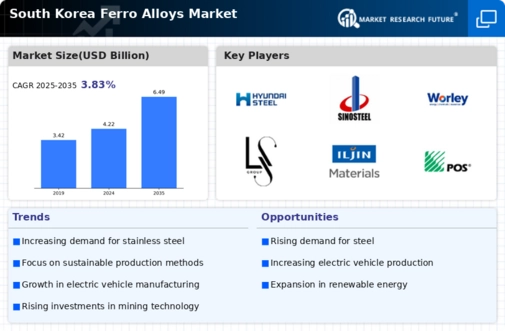The South Korea Ferro Alloys Market is characterized by a dynamic competitive landscape that is influenced by the demand for ferroalloys used in steel production and other industrial applications. With a growing industrial base, driven by advancements in technology and increasing infrastructure projects, the market shows a steady trajectory of growth. The presence of well-established players alongside emerging companies shapes the competitive environment, making it essential for stakeholders to adopt innovative strategies to maintain their market share.
The accessibility of raw materials, government policies geared towards supporting the metals industry, and advancements in production techniques contribute to the vibrancy of the market, highlighting the importance of adaptability and strategic positioning among the key players.Sungho Company has managed to carve out a significant niche in the South Korea Ferro Alloys Market, leveraging its commitment to high-quality production and reliability. The company has focused on building strong relationships with its customers while ensuring a consistent supply of ferro alloys required for various applications.
Sungho Company benefits from a robust distribution network that enhances its market presence, facilitating efficient delivery to manufacturers across the region. Moreover, the company's emphasis on research and development has led to the continuous improvement of its products, allowing it to meet the evolving demands of the industry.
With a clear focus on customer satisfaction and quality assurance, Sungho Company has established itself as a trusted name in the ferroalloys sector in South Korea.Hyundai Steel stands out in the South Korea Ferro Alloys Market through its integrated production capabilities and diverse offerings tailored to meet the needs of the steel manufacturing sector. Known for its commitment to sustainability, Hyundai Steel utilizes advanced technologies to reduce environmental impact while delivering high-performance ferro alloys. The company’s extensive product portfolio includes various ferro alloys essential for different steel processes, reflecting its strategic focus on innovation and quality.
Hyundai Steel is also recognized for its aggressive growth strategy, including mergers and acquisitions that have strengthened its market position and expanded its capabilities. The combination of a strong market presence, a dedication to research and development, and a focus on sustainable practices positions Hyundai Steel as a prominent player in the South Korean ferro alloys landscape.

















Leave a Comment